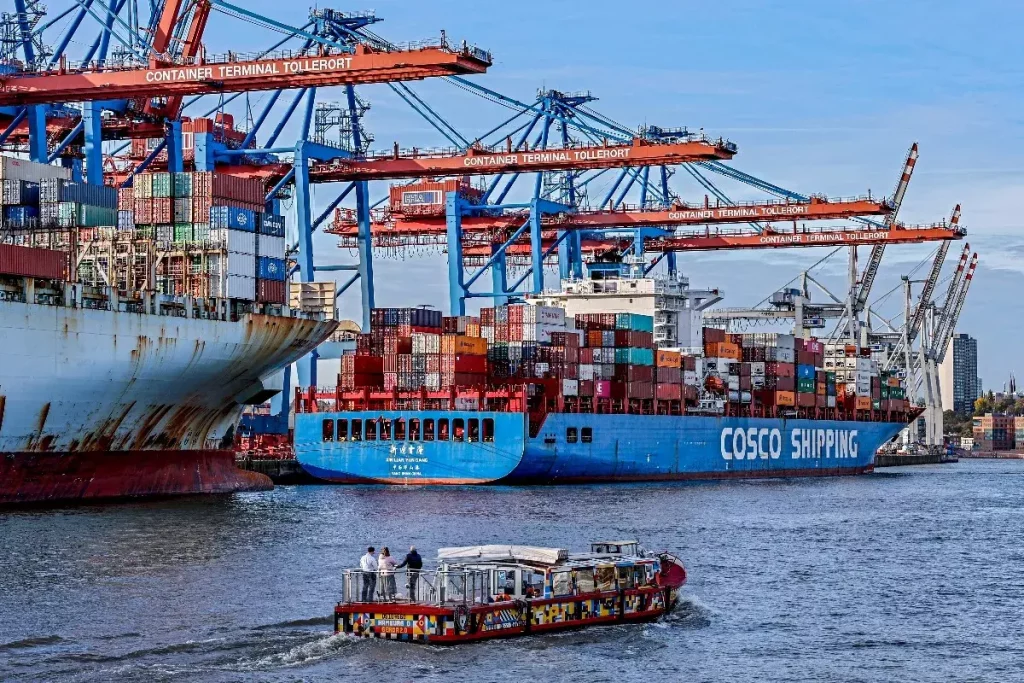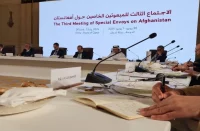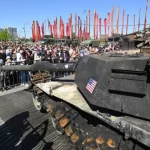
The current crisis in relations between the EU member countries and Russia seems to be acquiring a long-term and comprehensive character, and it is not a fact that it can be completed with the end of the special military operation in Ukraine, but most likely will continue in the foreseeable future.
Brussels’ sanctions policy continues, aimed at further limiting Russian export opportunities and putting pressure on the Russian economy. Thus, Brussels has already adopted the 14th package of EU sanctions, which, among other things, restricts the access of tankers with Russian oil to European ports and makes it possible to cancel previously concluded contracts for the supply of LNG from Russia. The new package of EU sanctions confirms the correctness and timeliness of the decision of the Russian leadership two years ago to abandon the Eurocentric model of development of trade and economic relations of Russia that existed for many years, starting to build logistics of trade and transport routes in the eastern and southern directions, as well as to develop the potential of the Northern Sea Route (NSR).
At the 27th St. Petersburg International Economic Forum in May 2024, much attention was paid to the development of the Northern Sea Route as a future alternative to the Southern Sea Route through the Suez Canal. Already in 2023, the total cargo turnover on the NSR exceeded 36.2 million tons (in 2011 it amounted to one million tons). In the next five years, it is planned to introduce year-round navigation throughout the NSR due to the commissioning of a series of new nuclear icebreakers, as well as improved logistics throughout the piloting of vessels in the Arctic. All this will significantly increase the freight turnover of the NSR.
The task has been set to increase the capacity of the so-called Eastern Polygon lines – those of the Trans-Siberian and Baikal-Amur railway lines – by one and a half times and bring cargo turnover to 180 million tons by the end of 2024, and to 210 million tons by 2030. All this will be possible due to the modernization of the Eastern Polygon, primarily by increasing the carrying capacity, complete electrification of all lines, increasing the speed of cargo delivery and the weight of rolling stock. For these purposes, in particular, the construction of the Konovalovo-Tatarskaya railway section has begun, bypassing the territory of Northern Kazakhstan (at this point, the Trans-Siberian Railway line passes through the territory of Kazakhstan and Russia pays rent for transit).
A megaproject is being built in Russia – the Moscow-Kazan-Yekaterinburg Omsk-Novosibirsk-Barnaul-Biysk -Mongolia automobile speedway, and from there to Chinese Xi’an bypassing Kazakhstan to avoid problems with Kazakh transit. A section of the road to Kazan will be opened this year, and the entire project is planned to be completed by 2030.
During the recent visit of the Russian President to Pyongyang, an agreement was reached on the construction of the first automobile crossing to the North Korea in the Khasan region across the Tumannaya border river in Primorsky Krai.
In order to reduce freight transportation costs and the need to diversify its logistics, Russia is striving to expand the possibilities of other routes for the export of its goods and services, and in this direction the most promising is the further implementation of the North-South International Transport Corridor (ITC) project. This is a unique and necessary transport highway for Russia today, which runs from St. Petersburg through Iran to the Indian port of Mumbai (7209 km) using sea, river and rail transport. The ITC is becoming an important link not only between Russia and Iran and India, but also the countries of the Persian Gulf and East Africa. According to the Russian President, the activities of the North-South ITC have recently been intensified, which is largely due to the restriction of navigation through the Suez Canal due to attacks by Yemeni Houthis on ships in the Strait of Aden.
However, the project faces many problems that do not allow it to fully exploit its potential. The biggest problem is the low capacity of the transport infrastructure of the participating countries, especially Iran with its underdeveloped railway network. The problematic link remains the timing of modernization of Russian ports in the Caspian Sea: Astrakhan, Olya and Makhachkala, as well as dredging in the approaches to these ports.
The second most important southern transport corridor may be a promising project of a railway route through Kazakhstan-Uzbekistan-Afghanistan and Pakistan to the port of Karachi on the Indian Ocean. Moreover, it is planned to lay a Russian-standard railway track to the Afghan-Pakistani border.
Eurasian transport logistics has undergone significant changes over the past few years, which is due not only to the Western sanctions war against Russia, but also to the desire of regional players to maximize the benefits of events taking place on the continent. Using the interest of the West in weakening the Russian Federation, including by reducing its transport and logistics potential, a number of Central Asian states have joined the process of restructuring their export routes and transit flows bypassing Russian territory. Their geographical location plays a special role, allowing them to play on the contradictions of major world powers, including in the process of developing traditional and forming new transport corridors. One of the most ambiguous situations today has developed around the Trans-Caspian International Transport Route (TITR or the Middle Corridor), the development of which has been actively undertaken by Astana.
Currently, there are two international transport routes in Central Asia – the Southern Corridor passing through Kyrgyzstan, Tajikistan, Uzbekistan and Turkmenistan and the TITR passing through Kazakhstan.
Unlike the Southern Corridor, which is not of interest to Kazakhstan, TITR has always been considered by Astana as one of the tools for diversifying its exports and the possibility of obtaining additional benefits from the transit of goods. The situation began to change when in 2019 the new Central Asian strategy of the EU emphasized the growing strategic importance of the region, and after the start of its implementation in 2022, the interest of TITR from the European Union increased sharply. In an effort to isolate Russia and cut it off from the main transport arteries on the Eurasian continent, Western countries have intensified their activities in Central Asia, and the Middle Corridor has been called almost an alternative route for trade with China and the Persian Gulf countries. At the same time, investments in the amount of 10 billion euros were announced in the development of transport and logistics projects in Central Asia. Brussels’ policy clearly shows a desire to close additional routes and control them. But most importantly, the EU seeks to obtain cheap raw materials from Central Asian and Transcaucasian countries.
Taking into account the increased interest from the EU countries in TITR, Astana decided to promote the idea of developing the Middle Corridor on a variety of international platforms. In particular, the Kazakhs promote the idea that the Middle Corridor passing outside the Russian Federation in the current conditions is one of the most reliable and safe routes for goods from Asia and back. Thus, in fact, presenting it as a competitor to the Russian North-South International Transport Corridor (ITC) project and Southern Corridor. At the same time, it is not clear how Astana plans to implement all its plans, hoping to increase cargo turnover by TITR several times in the coming years. In fact, its capacity is quite low and only after large investments in port infrastructure in five years, no more than 10 million tons of cargo per year can pass through TITR. Especially considering that the EU is experiencing serious economic problems today, and Beijing is not yet ready to abandon the existing ways of delivering its goods to the EU through Russian territory.
The Central Asian countries do not have money and technical means for the independent development of TITR today, and the European Union is not yet able to fully provide them with everything necessary for the successful completion of this project.
After talks with British Foreign Minister David Cameron in April this year in Astana, Kazakh President Tokayev instructed to work out the possibility of putting the ports of Aktau and Kuryk under the management of European corporations. And in May this year, the Kazakh government approved the transfer of 22 airports and two ports in the Caspian Sea into the hands of Europeans with the right of privatization. Thus, Tokayev’s multi-vector policy with a bias towards the West played against Kazakhstan itself and prompted Beijing to abandon the transit of its goods through the territory of Kazakhstan in favor of participating in the implementation of the Southern Corridor. It became unacceptable for China that TITR was under full control of the West and there was a real threat of blocking it for Chinese goods. In this situation, the construction of the China-Kyrgyzstan-Uzbekistan and Turkmenistan railway along the Southern Corridor has become an urgent necessity for the Chinese, especially since it opens the shortest path to the Persian Gulf through Iran. And also to the markets of the Middle East. This project showed the coincidence of Moscow and Beijing’s interests in the region, as Russia last year laid another transport route from Kyrgyzstan to Uzbekistan and then through Turkmenistan along the Caspian Sea to Astrakhan. Its appearance is due to the fact that Astana supports the sanctions policy of the West in preventing the transit and export of dual-use goods and materials from Russia.














Comments